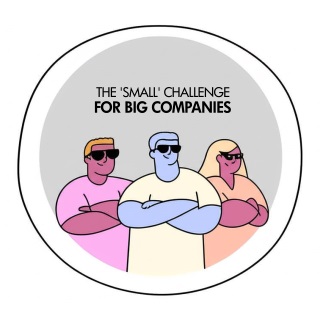
I’ve been binge-watching the Irish-British sitcom Mrs. Brown’s Boys. It’s a refreshingly unpolished comedy—equal parts pratfall, dry wit, and show-business bravado. The series delights in on-air flubs and live-studio gags. Beneath the chaos lies a shrewd grasp of character and timing.
The show has deservedly received poor reviews from critics and TV audiences, but it thrives where traditional comedies hesitate—embracing the messy and unscripted with gleeful abandon.
One of the show’s hallmarks is its reliance on ad-libbing. During sketches, actors bait Brendan O’Carroll—who plays the indomitable Agnes Brown—with off-book quips, and he returns the favor by springing surprises on them. This give-and-take sparks real mishaps: actors flub lines, snort with laughter, or break character outright. These unscripted gaffes often hit harder than the written punchlines and lend the series a raw, stage-play immediacy.
That anything-goes spirit comes from an unconventional ensemble. Most of the main cast are family members and lifelong friends. They’ve grown up with these characters—on radio, in touring stage shows, and on TV. That loyalty infuses each scene with genuine warmth, turning flubbed lines into endearing inside jokes. In Mrs. Brown’s Boys, even the mayhem feels like a home movie you’re invited to sneer at—and secretly applaud.
Rather than hiding its seams, Mrs. Brown’s Boys tears them wide open. It winks at the camera and revels in live-show unpredictability. These fourth-wall breaches aren’t gimmicks—they’re invitations. Viewers aren’t just watching; they’re in on the joke, complicit in every pratfall and punchline. This collapse of artifice invites a question: what do we value more—crafted dialogue or unscripted reality? Mrs. Brown’s Boys discards polish in favor of spontaneous combustion. When an actor snorts mid-scene, it’s not a mistake—it’s a reminder that we’re witnessing something real. And that vulnerability—that glorious unsteadiness—is its greatest asset.
Messy and divisive, the show thrives on human unpredictability. It doesn’t just deliver punchlines, it invents them live. You’re not merely laughing at the jokes; you’re watching them take shape in real time. That, perhaps, is the show’s slyest joke.
At its core, Mrs. Brown’s Boys is more than slapstick anarchy—it’s a case study in presence. In work or in life, we’re tempted by flawless facades. But real moments emerge only when we risk imperfection. The show’s unscripted humor reminds us that when control slips, authenticity rushes in—and those unguarded flashes are often the funniest, and most human, of all.
Idea for Impact: Often, irreverence—when wielded with wit—is the finest antidote to cultural pomposity.
 At this year’s Cannes Film Festival, a group of Danish filmmakers unveiled a manifesto for a cinema movement called Dogma 25. Building on the radical spirit of
At this year’s Cannes Film Festival, a group of Danish filmmakers unveiled a manifesto for a cinema movement called Dogma 25. Building on the radical spirit of  Few phrases in the sales playbook are as overused and quietly harmful as “going after the low-hanging fruit.” It promises quick wins, fast cash flow, and a morale boost. In the short term, it delivers. These easy deals validate a pitch, energize a team, and keep the lights on. When immediacy becomes a guiding belief,
Few phrases in the sales playbook are as overused and quietly harmful as “going after the low-hanging fruit.” It promises quick wins, fast cash flow, and a morale boost. In the short term, it delivers. These easy deals validate a pitch, energize a team, and keep the lights on. When immediacy becomes a guiding belief,  Ever stepped into the shower and suddenly cracked a lingering problem wide open? You turn on the water, and just like that, the perfect idea rushes in. That’s your subconscious at work, making
Ever stepped into the shower and suddenly cracked a lingering problem wide open? You turn on the water, and just like that, the perfect idea rushes in. That’s your subconscious at work, making 




 BlaBlaCar’s deliberate decision not to expand into the United States underscores how cultural fault lines can impede the global flow of innovation. The French platform has
BlaBlaCar’s deliberate decision not to expand into the United States underscores how cultural fault lines can impede the global flow of innovation. The French platform has